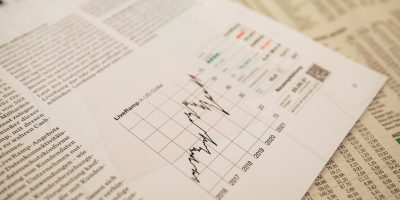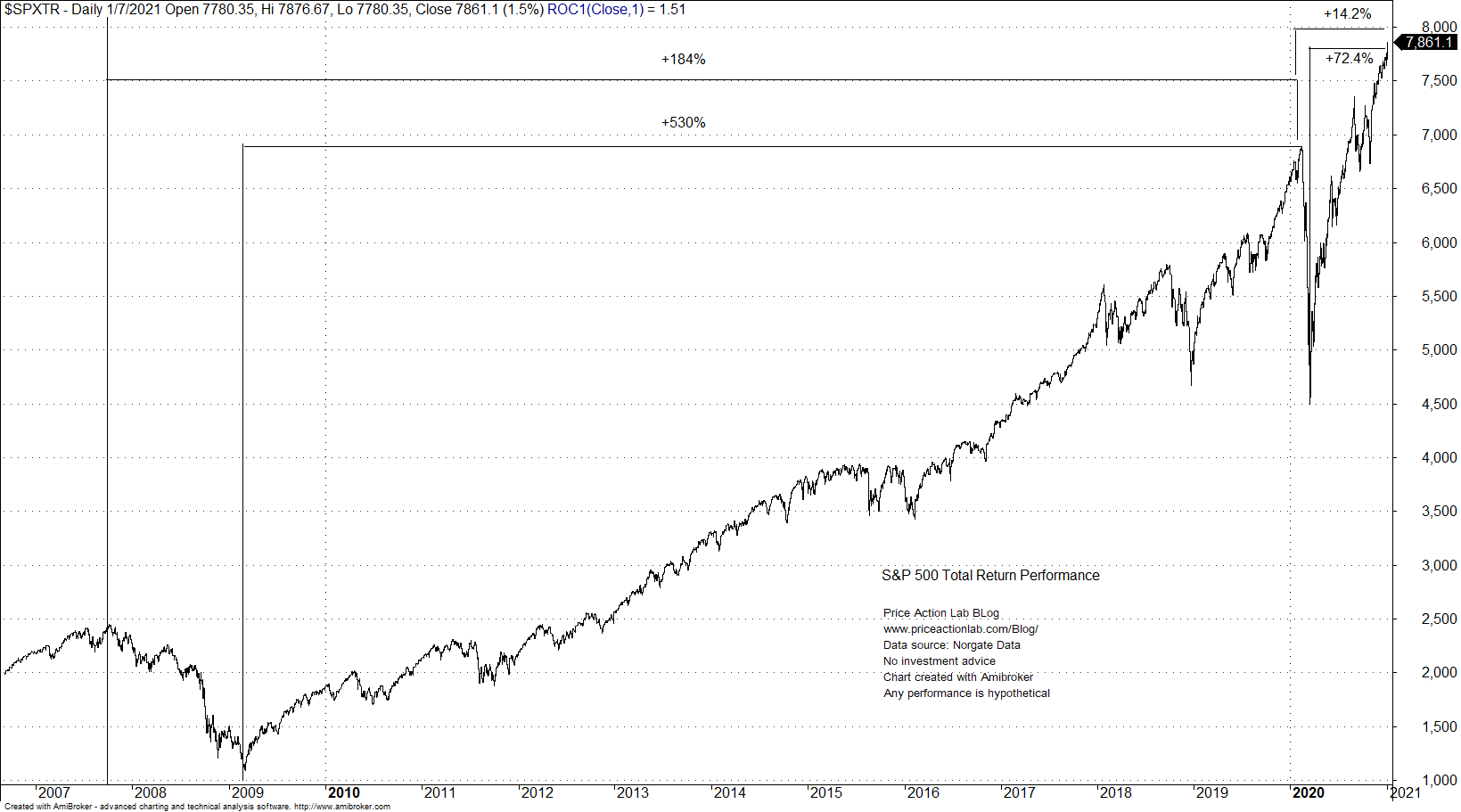After the last two left tail events in equity markets, central banks have transformed left tail risk into right tail reward. Here are the numbers for S&P 500 total return.
Central banks acted swiftly during the Financial Crisis of 2007 – 2008 by introducing quantitative easing and related measures. Those actions transformed the left tail risk in equity markets into a huge right tail reward for passive index investors but also for other more sophisticated market participants that employ martingale position size methods to average down after equity market corrections.
As the chart below shows, the S&P 500 total return from the bottom of the Financial Crisis to the top before the recent pandemic crisis was a stunning 530%!
Obviously, identifying a major bottom ex-ante is extremely hard, if not impossible, but those who just ignored a 55% drop due to the Financial Crisis realized a total return of about 184%, or a mean annual total return of around 18.4%, to the top of the next tail event due to the pandemic.
The total return from the bottom of the pandemic crisis is 72.4% in less than a year! Those who stayed in the market and ignored a drawdown in excess of 30% were rewarded by central banks with 14.2% total return in less than a year!
It is all hindsight, of course, yet amazing. All the advanced mathematics and strategies for dealing with tail risk have not proven useful to investors other than to sophisticated speculators. In fact, trying to hedge or identifying the bottom could have adversely impacted returns, unless the techniques used were sophisticated and accurate. The central banks now rule the investment game and it is not obvious for how long that will continue; it may be for next few years or even decades.
Those who have been impacted negatively by central bank actions to transform left tail risk into right tail reward were quantitative funds and market timers among others. The rebounds from large corrections were fast and allowed little time to quantitative models to react causing either lower gains as compared to buying and holding or even losses.
These central bank actions have also induced reflexivity, or positive feedback, with a large population of new participants buying call options on about anything that is traded because they believe there is no significant left tail risk. Unexpected events could cause a lot of financial stress to those market participants and lower further an eroding standard of living. After 12 years of relentless equity market support, central banks should maybe start factoring in the risks and moral hazard they have created.
Charting and backtesting program: Amibroker
If you found this article interesting, you may follow this blog via push notifications, RSS or Email, or in Twitter








